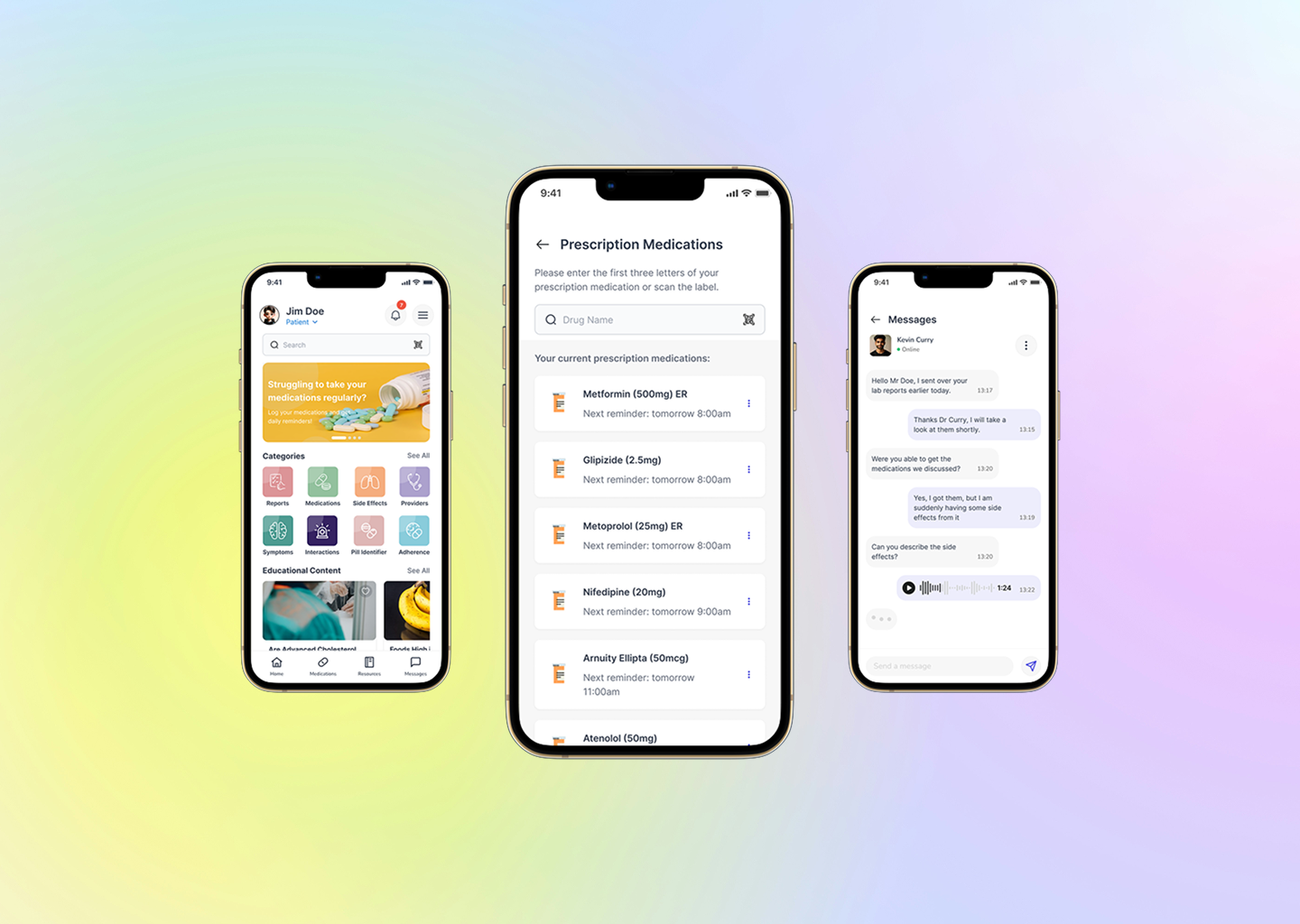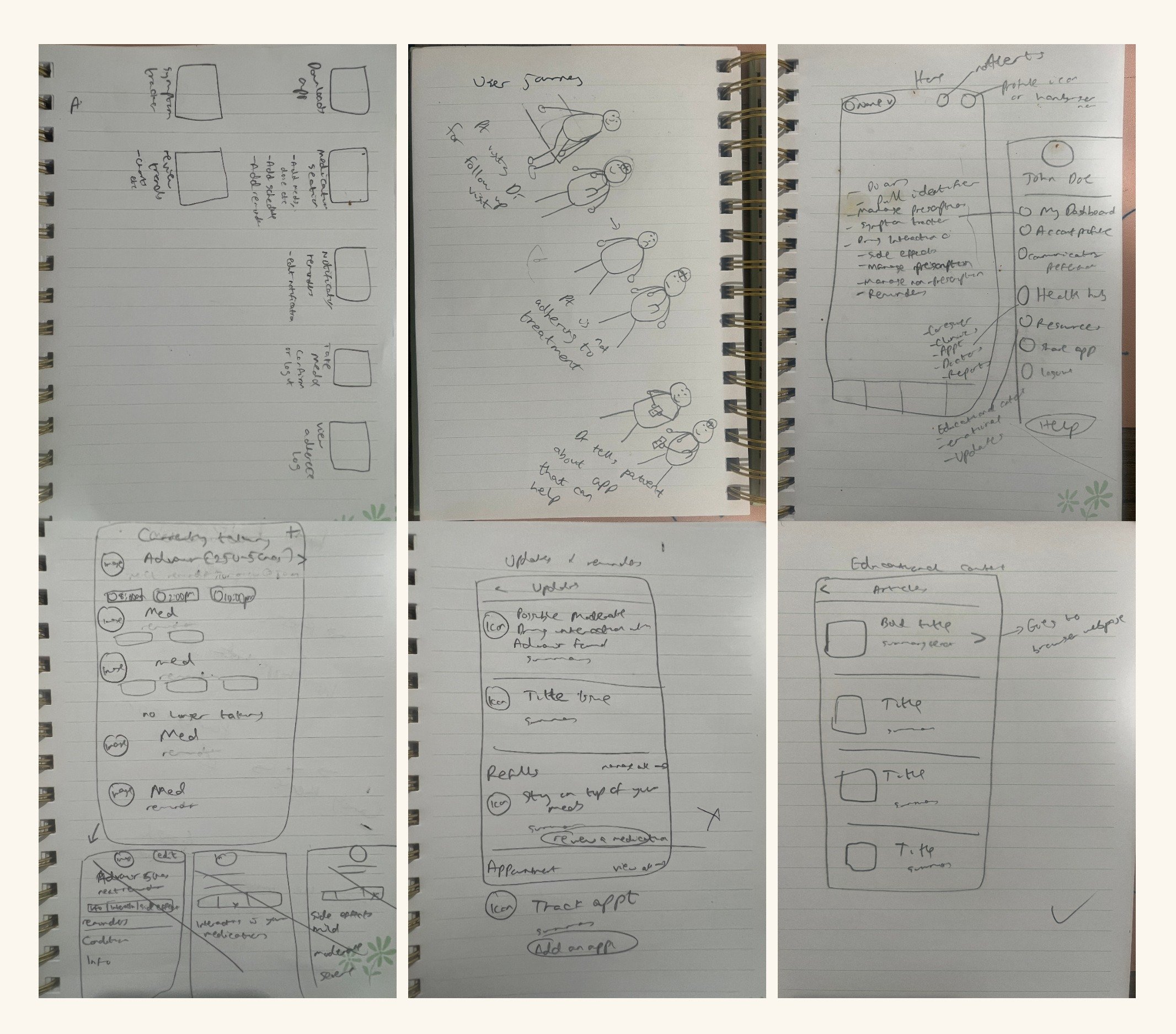Virtual Health Assistant for Chronic Disease Management

My role: Product designer
Project Type: Self initiated
Tasks included: Researching users, Planning user tasks and flows, Creating wireframes and prototypes, Testing usability, and Designing user interfaces.
Tools used: Figma
Overview
While working as a pharmacist, I noticed daily how patients with chronic conditions struggled to stay consistent with their medications, track symptoms, and communicate effectively with their providers. Many expressed frustration or confusion, not because they didn’t want to manage their health, but because the process was fragmented and overwhelming.
This inspired me to design a virtual health assistant app concept that empowers patients to manage their care more confidently, stay connected with their healthcare team, and build habits that support long-term health outcomes.
Problem
Patients living with chronic diseases often face challenges such as:
- Forgetting or mismanaging medications
- Difficulty tracking symptoms and progress
- Limited communication with healthcare providers
- Overwhelming, fragmented information
These issues often lead to decreased adherence and poorer health outcomes, gaps that could be addressed with thoughtful digital design.
Success metrics
Success will be measured looking at some of these metrics:
- Constant increase in DAU.
- Decrease in health decline of patients using the app.
- Better communication between the patients and their healthcare providers.
- Better chronic disease state management
The goal
Design an intuitive, patient-centered mobile app that helps users:
- Stay consistent with medications through reminders and insights
- Track symptoms and progress over time
- Communicate more easily with providers or caregivers
- Build confidence and independence in managing their condition
Research & Insights
Drawing from my background as a clinical pharmacist, I observed firsthand how managing chronic conditions often feels like a full-time job for patients.
Many struggled to remember complex medication schedules, understand side effects, or stay motivated when progress felt slow. These daily challenges shaped the foundation of my design approach.
To complement those firsthand insights, I also reviewed existing health management tools and analyzed patient feedback from digital health communities.
Key insights:
- Simplicity drives adherence: Overly complex interfaces make users disengage quickly.
- Personalization matters: Patients respond better when reminders, tone, and visuals align with their specific condition or lifestyle.
- Caregiver & provider connection builds accountability: Patients want to share progress or concerns without extra steps.
- Tone and trust are essential: The visual design and language of health apps must balance professionalism with empathy.

User journey flow
After conducting some user interviews and competitive analysis, I did some brain storming about different approaches and user flows to solve some of the pain points users were experiencing with their chronic condition management.
This was important to do in order to understand the customers needs rather than making assumptions. This in turn helped me decide on what features were important for the app.

Key App Screens
These are the screens that play a vital role in helping customers manage their chronic disease states.
Onboarding: Displays a few key features of the chronic management app.
Home Page: Displays categories available on the app, educational content for patients and care givers and other key information and reminders.
Medication Page: Displays current and archived medications of the patient with ability to edit and set reminders. It also includes information about each medication such as uses, side effects, warnings etc.
Symptom tracker: Allows patients to track their symptoms to share with health providers and caregivers.
Pill identifier: Allows patients to identify their medications using their camera or entering key information about the pill.
Reminder: Patients will get reminders in the app to take their medication and their adherence will be tracked using the adherence score tracker.
Communication: Patients can add their clinic and in turn add their doctors and care givers. They can also communicate with health care providers easily and get reports through the app.

Take aways
Research makes a huge difference!
I have a health care background as a Clinical Pharmacist stand this expertise played a huge role in understanding some of the features and health care lingo. I was able to use this expertise to consider various use cases that were vital for this app.
User interviews are key
By doing user interviews with patients, caregivers and healthcare providers, I was able to learn various pain points that they come across daily that I might not have otherwise thought of. The feedback I got also gave some ideas on what problems we should solve.
Components all the way
Throughout the whole process, there were several times I had to reuse designs and layouts, or make adjustments etc. Using components made it a lot faster and easier to make the changes without having to go through every screen I had designed.


%20(1).svg)